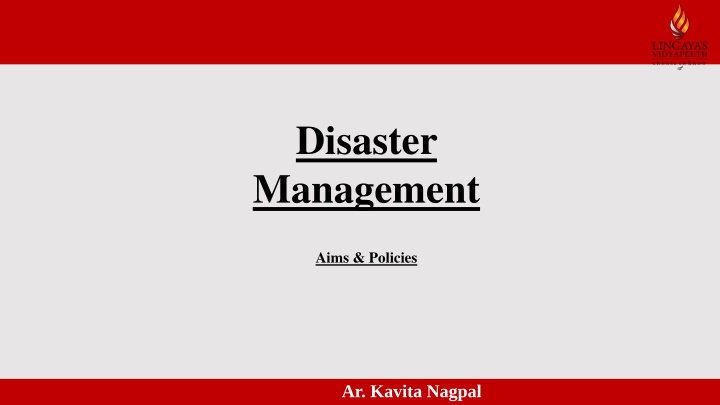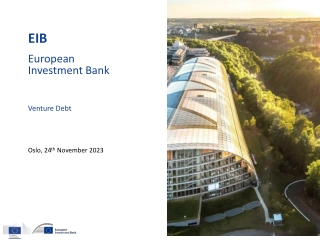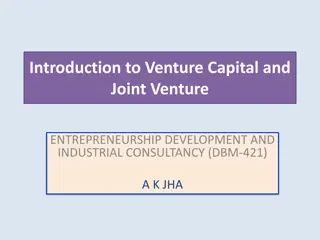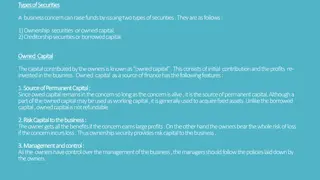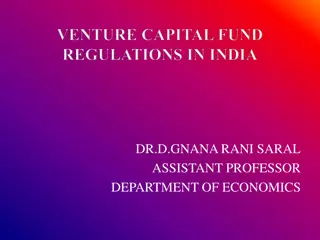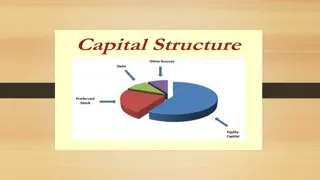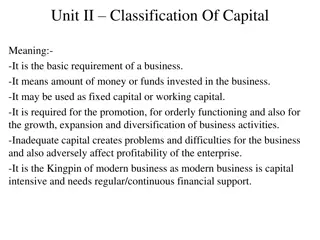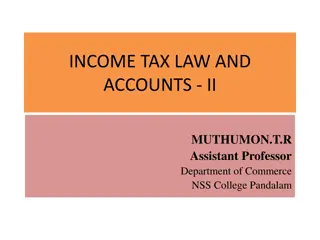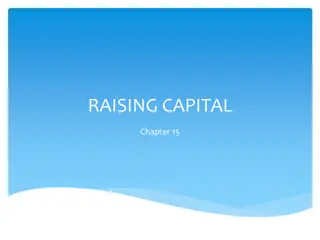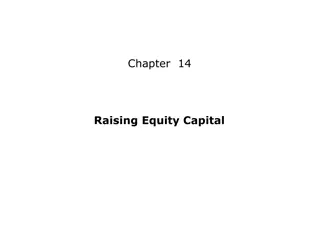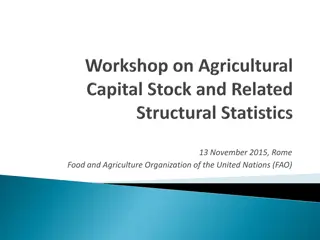Goverment Venture Capital Programs: Advantages and Concerns
Venture capital (VC) firms provide valuable support to innovative young companies. However, government venture capital (GVC) programs aim to address financing gaps faced by these firms. While GVCs offer social payoffs and positive externalities, concerns exist about their effectiveness, potential crowding-out effects, and accountability compared to private VCs.
Download Presentation

Please find below an Image/Link to download the presentation.
The content on the website is provided AS IS for your information and personal use only. It may not be sold, licensed, or shared on other websites without obtaining consent from the author.If you encounter any issues during the download, it is possible that the publisher has removed the file from their server.
You are allowed to download the files provided on this website for personal or commercial use, subject to the condition that they are used lawfully. All files are the property of their respective owners.
The content on the website is provided AS IS for your information and personal use only. It may not be sold, licensed, or shared on other websites without obtaining consent from the author.
E N D
Presentation Transcript
Disaster Management Aims & Policies Ar. Kavita Nagpal
Principles and Components of Disaster Management There are certain principles of disaster management 1. 2. 3. 4. 5. 6. 7. 8. 9. 10. 11. 12. 13. 14. 15. Principle of comprehensiveness Principle of prevention and protection Principle of shared responsibility Principle of judicious use of available resources Principle of collaboration and coordination Principle of flexibility Principle of practice of ethical standards Principle of prioritization Principle of risk-driven hazard identification Principle of initiative Principle of accountability Principle of equity Principle of subordination and individual interest to common interest Principle of order and discipline Principle of unity
Aims of Disaster Management Disasters, as we know, disrupt the normal lives by causing havoc and destruction The destruction that is caused in a few seconds takes years and decades to recompense. The important aspect of disasters is that though they cannot be done away with surely the extent of damage can be reduced considerably. Thus, management of disasters becomes an important agenda for both individuals and nations. Management of disaster is a pre-requisite, which incorporates the steps of mitigation, preparedness, response and recovery activities. The aim is to minimize the risk of disasters and to handle them when they do occur in an effective manner to limit and reduce the quantum of loss.
Aims of Disaster Management The aims of disasters management are 1. To reduce the impact of disasters and quantum of loss. 2. To create environment where individuals and community work together in groups and are able to achieve selected aims effectively and efficiently. 3. To develop important strategies to reduce and control the occurrence of disasters. 4. To train individuals and community to remain prepared for sudden disasters. 5. To organize recovery and rescue mechanism. To trigger the affected region s and community emergency resources for quick response. 7. To coordinate and communicate for proper management of resources, namely, man, material and economic resources available for the purpose of disaster response and recovery. 8. To foster team spirit, where persons rise above their self to help the victims of disasters in whatever way they can.
Aims of Disaster Management 9. To generate resources necessary for rescue, recovery and post-recovery work. 10. To elicit action for management of disaster in a time-bound manner. 11. To facilitate the non governmental and governmental machinery to work in tandem for disaster management. 12. To commit resources for disaster mitigation, preparedness, rescue and recovery. 13. To draw the attention of national and international agencies for disaster relief. 14. To formulate policies for curbing the menace called disaster before its onset. 15. To develop a systematic approach to management of disasters. 16. To foster local resilience to disasters by adopting a consensus-building approach in consultation with the local community.
Nature, Scope and Management Process It is true that given the nature of our existence, we are all living in a risk-prone hazardous zone and any disaster can strike at any time. If we plan ahead and are prepared, these disasters can be managed to a great extent and the damage that these disasters can cause can be reduced substantially. The problem with Disaster management process is Mismanagement of Resources Underestimation of impact of Disaster A holistic approach towards disaster management is warranted. Management is about accomplishing goals by optimum and judicious utilization of resources. Setting up goals and ascertaining responsibility of utilization of both human and material resources is required. Management is indispensable to any of the disaster irrespective of the size or nature of events.
Nature, Scope and Management Process Disaster Management should focus on optimal utilization of available resources for reducing or limiting the impact of disasters. Disaster Management by nature is both an art and a skill. A skill in conducting any human activity. Art is application of knowledge; an artist attains perfection through practice; Disasters are situations which generally trigger a terror alarm and people are unable to respond as they get panicky. With practice and exposure, this skill can be developed. There is involvement of both science and art in management of disasters. Science takes care of well-laid principles and how they are implemented is dependent on the skill of individuals, which inherently an art.
Nature, Scope and Management Process Disaster Management seeks to replace explanations with a systematic study, with the aim to explain, predict and control disaster. Scope of Disaster management is large as it covers the entire gamut of stakeholders, from individuals to communities, regions and nations. The process of disaster management covers all actions that are taken to reduce the losses from disasters. According to IFRC (International Federation of Red Cross and Red Crescent Societies), disaster management is can be defined as the organization and management of resources and responsibilities for dealing with al humanitarian aspects of emergencies, in particular preparedness, response and recovery in order to lessen the impact of disasters.
Nature, Scope and Management Process Planning helps by providing clear goals and map the activities needed to achieve them efficiently and effectively. Organizing is the second step where roles and responsibilities are defined. Staffing involves manning the organizational structure through proper and effective selection and development of personnel to fill the designed roles. Leading articulate clear organizational vision for its members to accomplish, energies and enable employees in achieving organizational goal. Controlling means evaluation of how well an agency or a group has achieved its goal. Management of disasters is a dynamic process consisting of various elements and activities that have to be coordinated and controlled for effectiveness.
Policy of Disaster Management Policy is a statement of intent that assists and aids decision-making. The disaster management policy aims at the following: 1. To provide guidance and directions to set management and execution at the grass-root level. 2. To promote community-based management and execution at the grass-root levels. 3. To develop capacity of all stakeholders. 4. To consolidate past initiatives and develop best practices for future use. 5. To facilitate cooperation with agencies at national, regional and international levels. 6. To ensure multi- sectoral synergy for compliance and coordination. 7. To create and uphold a culture of prevention and preparedness. 8. To priorities disaster management as the principal priority at all echelons and at all times.
Policy of Disaster Management 9. To promote disaster mitigation measures on the basis of state-of-the art technology and environmental sustainability. 10. To integrate disaster management issues into the development planning process. 11. To create and protect the veracity of an enabling regulatory environment and a compliance system. 12. To promote culture of coordination where all the stakeholders work in tandem for generating awareness and developing capacity. 13. To ensure well-organized response and relief measures to aid the disaster- affected person. 14. To visualize reconstruction and opportunity to build disaster-resilient structures. 15. To take time-bound actions for response, relief, rehabilitation and reconstruction.
